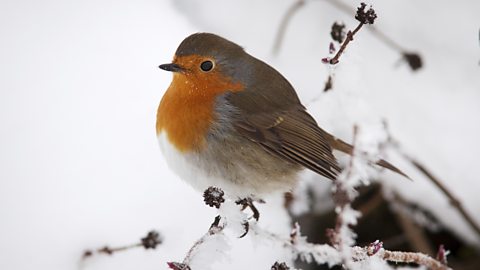Linnaean system of classification
Living organismLiving entity, eg animals, plants or microorganisms. are classifyTo put into groups. into groups depending on their structure and characteristics. This system was developed in the eighteenth century by Carl Linnaeus. The classification of speciesA type of organism that is the basic unit of classification. Individuals of different species are not able to interbreed successfully. allows the subdivision of living organisms into smaller and more specialised groups.
Kingdoms
The first division of living things in the classification system is to put them into one of five kingdoms. The five kingdoms are:
- animals (all multicellular animals)
- plants (all green plants)
- fungi (moulds, mushrooms, yeast)
- protists (amoeba, chlorella and plasmodium)
- prokaryotes (bacteria, blue-green algae)
Further divisions
Living things can then be ranked according to:
- phylumA taxonomic rank between kingdom and class (the plural is phyla). The arthropods, for example, are a phylum.
- class
- order
- family
- genusA rank in classification below family and above species.
- speciesA type of organism that is the basic unit of classification. Individuals of different species are not able to interbreed successfully.
Phylum follows Kingdom and has many different organisms, including three examples from the Animal Kingdom below:
- chordata, which have backbones
- arthropod, which have jointed legs and an exoskeleton
- annelids, which are segmented worms
Class is an additional sub-division, which for example, results in the Chordata phylum being divided into:
- mammals
- birds
- amphibians
- fish
- reptiles
Order follows class and as an example, mammals can be further sub-divided into a variety of different groups such as:
- carnivores
- primates
Orders are broken down into families. Here are a few examples of which carnivores can be divided into:
- canidae - dogs
- felidae - cats
Genus, the Felidae family can be further sub-divided into four genus examples:
- acinonyx - cheetah
- panthera - lion and tiger
- neofelis - clouded leopard
- felis - domestic cats
Species is the final classification stage, and the genus panthera can be divided into:
- panthera leo (lion)
- panthera tigris (tiger)
As an example, the complete breakdown of the classification of lions:
- kingdom - animal
- phylum - vertebrate
- class - mammal
- order - carnivorous
- family - felidae
- genus - panthera
- species - panthera leo
There are many ways to remember this order, for example using the mnemonicA tool to help the memory, often by using a memorable pattern of sounds, letters or words. :
Kids prefer candy over fresh green salad
The binomialHaving two parts to a name. In the binomial system of classification, each organism is named for its genus then its species. system of naming species uses Latin words. Each name has two parts, the genus and the species. For example, human beings belong to the genus Homo, and our species is sapiens - so the scientific name is Homo sapiens.

The binomial system is important because it allows scientists to accurately identify individual species. For example, the European robin is Erithacus rubecula. It is much smaller than the American robin, Turdus migratorius, which belongs to a different genus.
The grouping of families was added to allow the large number of new species to be included in this system. Linnaeus' original ideas have been adapted, but continue to be accepted and as new species are identified they can be fitted into the current classification system.
Originally, Linnaeus couldn't distinguish between different types of organisms such as algaeA group of organisms that photosynthesise but lack the complex range of cell types and organs found in land plants. Most algae are aquatic. All have chloroplasts., lichenA type of fungus that grows on rock. and fungiNon-green plants that obtain their energy by decomposing dead organic remains.. The inability to examine such organisms in detail made separation of these difficult at the time.
As more scientific methods developed, it allowed scientists to examine organisms in more detail and note important features, such as the identification of sex organs. This allowed more divisions to be created, and with the advancement of technology, this allowed the development of Linnaeus's classification system.